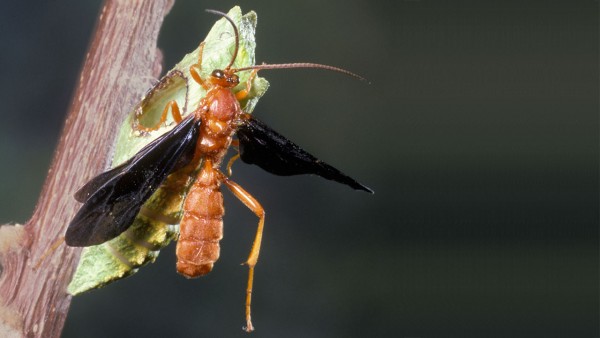Wasps introduced a new genetic code to butterflies

A team of French scientists who studied the relationship between wasp parasites and caterpillars of certain butterfly species found an interesting fact : wasps transferred to the caterpillars part of the viral DNA, which now protects the caterpillars from a virus that was previously deadly for them. The caterpillars, like many other living organisms, have an immune system that protects the “host” from foreign objects entering the body.
If a parasitic wasp introduces eggs into the body of a caterpillar, whose immune system works 100%, then the eggs will die (the caterpillar itself may die, but this is a secondary issue). In order to avoid rejection, wasps introduce the so-called brackoviruses to the caterpillars. When such a virus enters the victim's body, the immune response is suppressed. As a result, the eggs are not torn away, and after a while, the larvae of wasp parasites hatch from them.
As it turned out, some of the caterpillar virus genotype could be used for their own purposes. The French scientist made this conclusion after checking the DNA of various representatives of Lepidoptera (Lepidoptera) with the DNA of brackoviruses. It is possible that in the past the genes of these viruses became part of the DNA of caterpillars, which, having survived for some reason, became butterflies that transmitted the changed DNA by inheritance.
And these alien genes have been working for the benefit of butterflies for many thousands of years, transmitted from generation to generation. As a result, caterpillars with altered DNA do not suffer from baculoviruses, which in a usual situation are deadly for these organisms. The genes of bracoviruses, firstly, disrupt the normal functioning of the cytoskeleton, suppressing the body's immune response, and secondly, block access to the body of baculovirus caterpillars .
The authors of the study emphasize that many species of butterflies with updated DNA are, in fact, genetically modified organisms. A similar exchange of genes was known long before the aforementioned study, but for the most part, it was only about bacteria and the exchange of genes between them. Thus, scientists say, genetically modified organisms appear in nature quite often, and for natural reasons.
